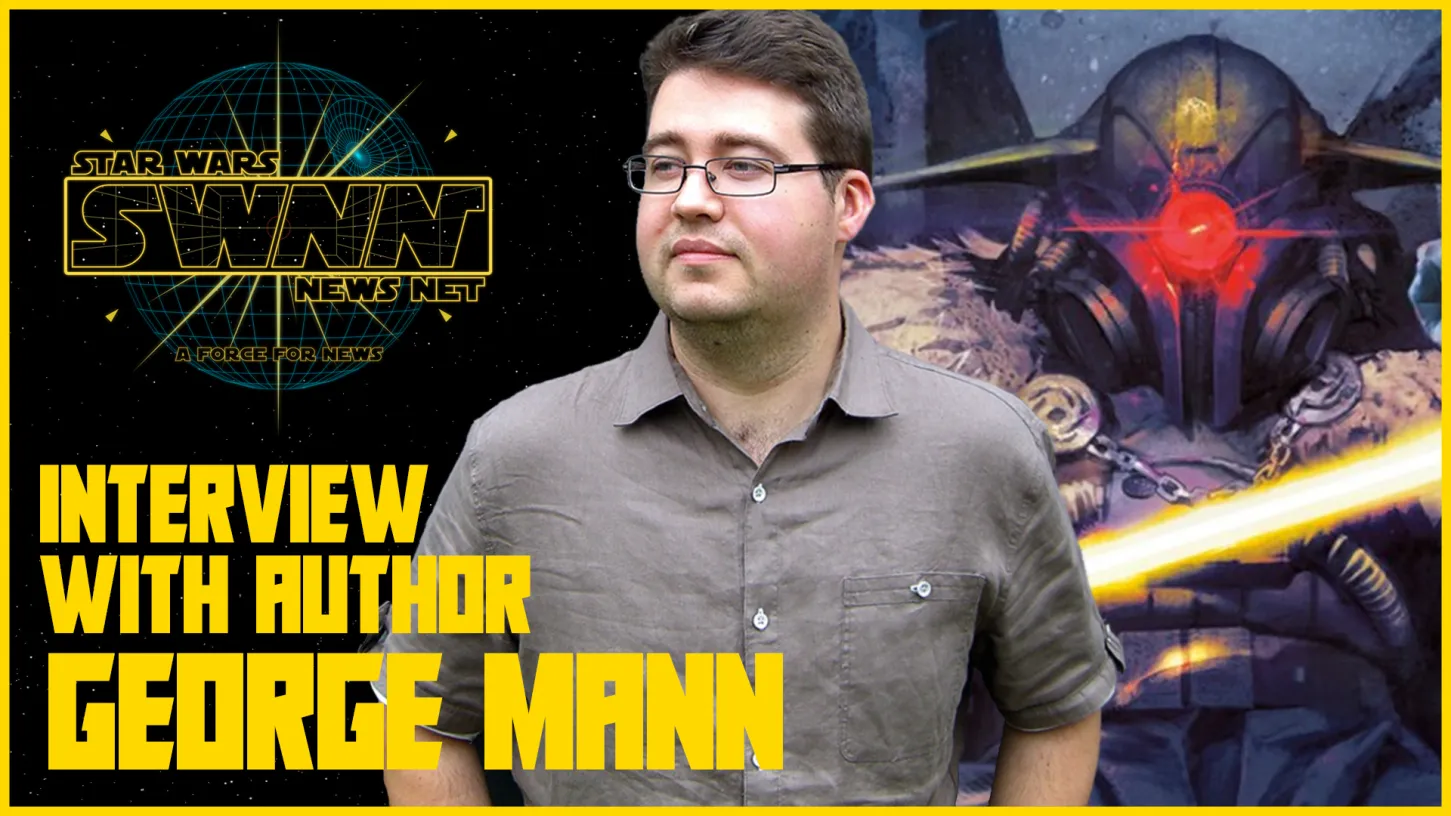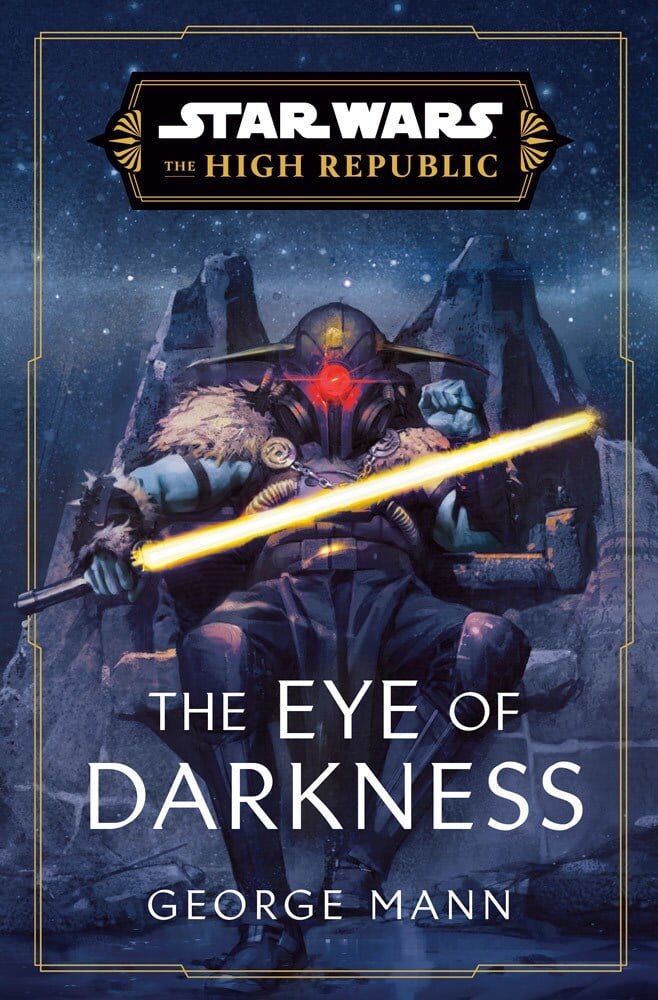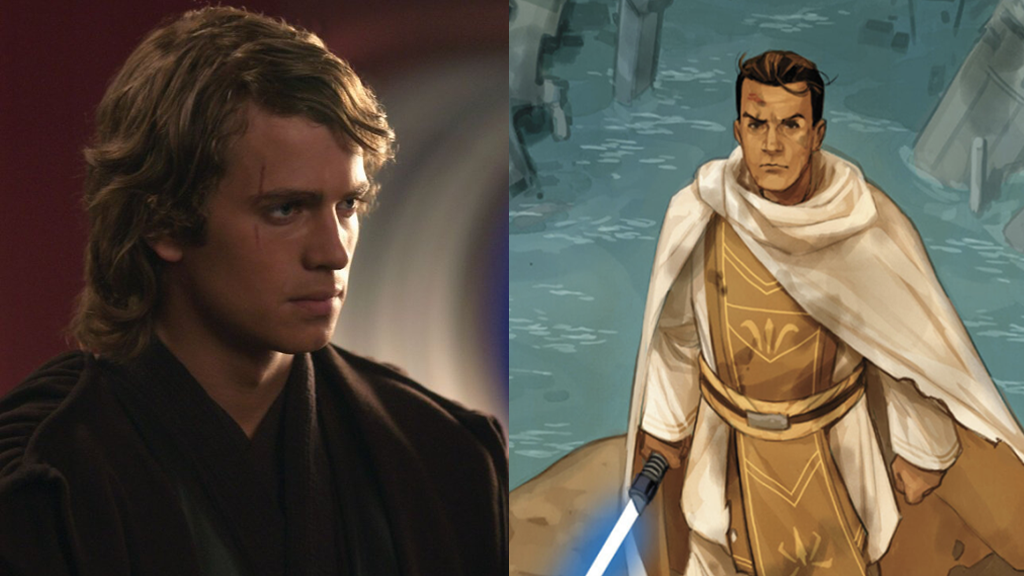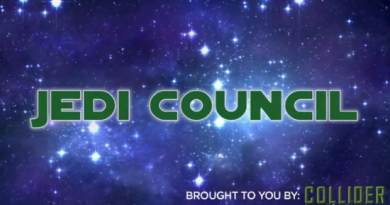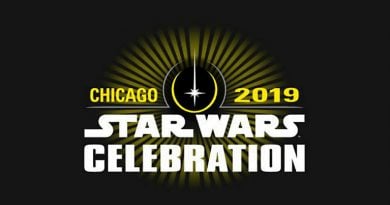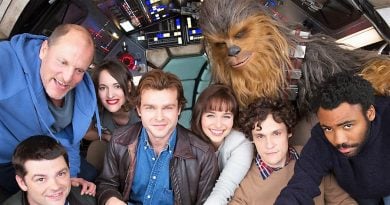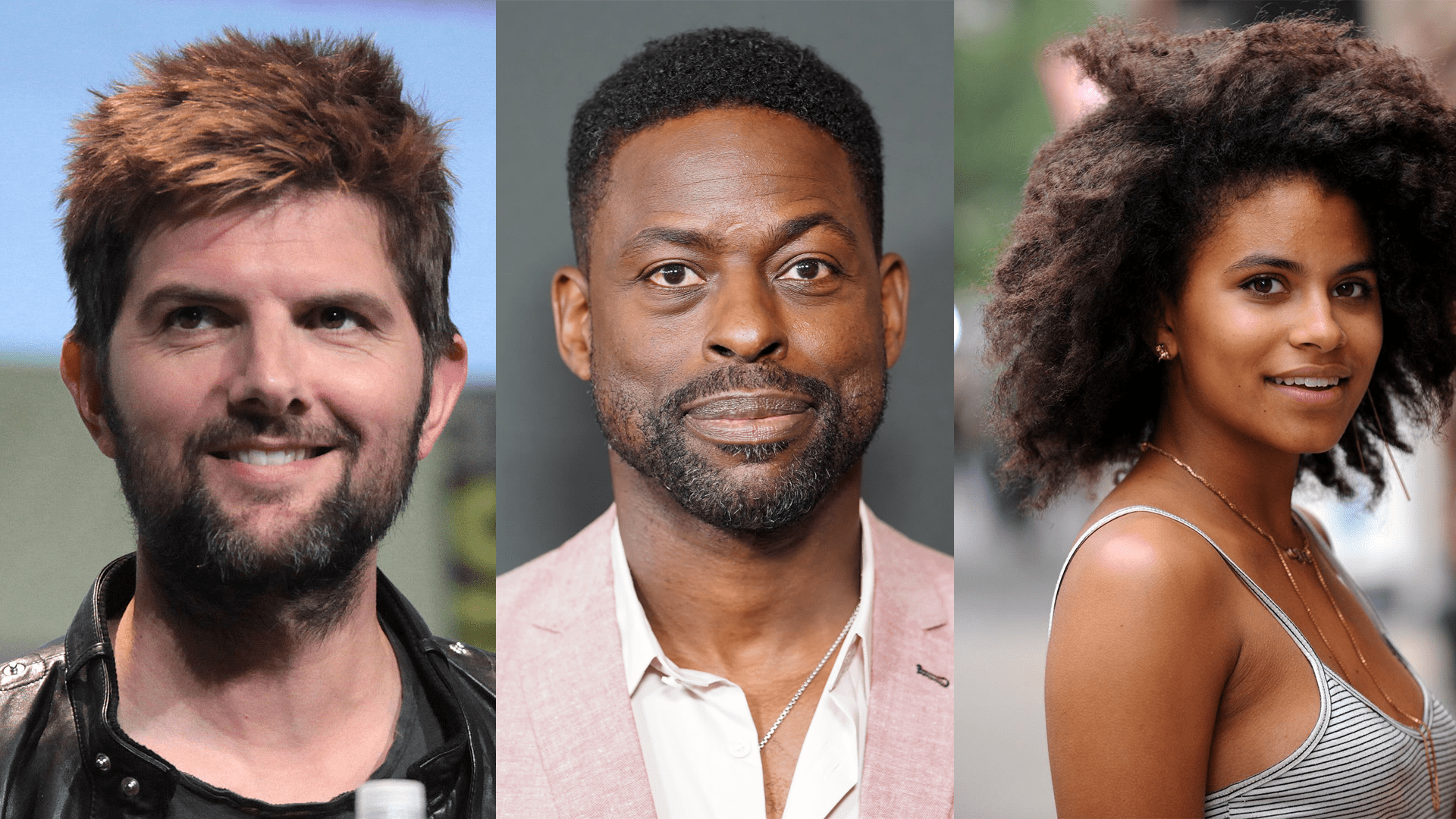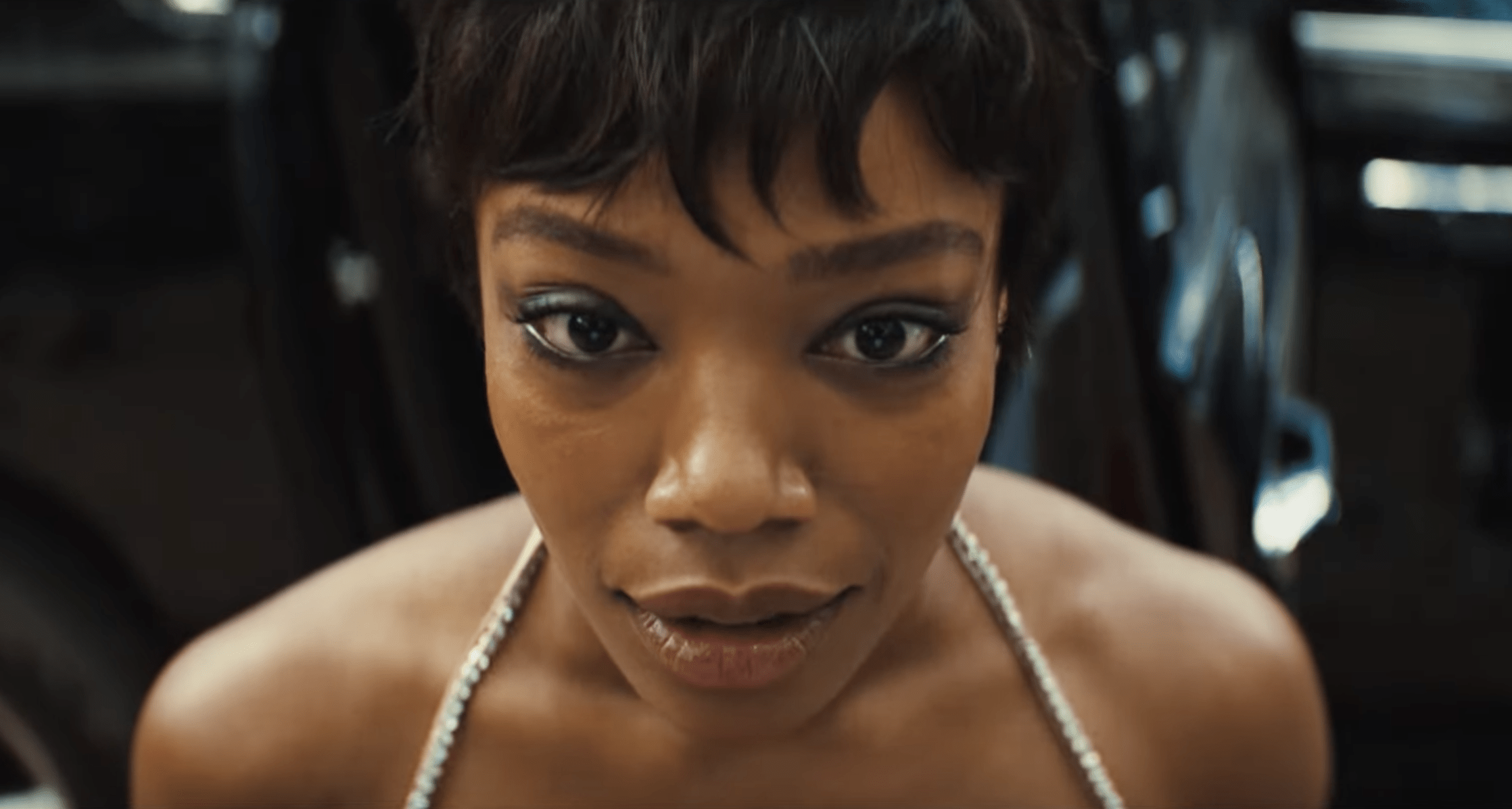SWNN Interview: Author George Mann on the Challenges Writing ‘The Eye of Darkness’, Elzar Mann vs. Anakin Skywalker, and More
We are one day away from Escape from Valo, the next novel in Phase 3 of the High Republic publishing initiative. That makes it an excellent time to look back at this phase’s launch before moving ahead. The Eye of Darkness was author George Mann’s first adult Star Wars novel. In it, he had the task of picking the story back up after the horrific events of The Fallen Star and the decimation of Starlight Beacon. Feel free to check out our non-spoiler review if you haven’t read it since the novel’s release in November.
I was lucky enough to speak with Mann about The Eye of Darkness, diving deep into the minutia of how he brought the first major chapter of this phase to life. We talked about the challenges of taking on the novel and the inspirations he had while writing it. He went into detail on many of the major characters, including his approach to Marchion Ro. I asked him how he feels about online comparisons between Elzar Mann and Anakin Skywalker. And while it’s a ways out, I gently poked the bear on his next major Star Wars project, Tears of the Nameless.
This is an abridged conversation. Our whole discussion will be linked after this written portion.
There are major spoilers for The Eye of Darkness throughout this interview.
Q: You’ve done a whole lot of Star Wars. Myths & Fables, Dark Legends, and a whole bunch of other stuff. So your portfolio is very diverse, but there’s things in each of your stories that work together each in in their own separate ways. What types of themes and storytelling elements do you try to incorporate into any type of Star Wars that you do?
A: Whenever I approach a Star Wars story, I’m very conscious that I want it to feel like Star Wars. For me, tone is everything. I’ve written for a lot of Star Wars, as you say, and quite a few other franchises as well, and I always find that getting the tone right is the key to it. The details are important. What color someone’s lightsaber blade is and things like that, but actually the overall tone is the most important thing. I want people to sit down and read something I’ve written and say does it feel like a Star Wars story? Yes, it does. And I think there are a few key things that George Lucas did early on that set the tone for Star Wars.
I always try and bring those things into what I’m writing. A sense of mythology and adventure, a sense of hope, stories about family, whether that’s biological family or found family. I think these are all elements that help you get a sense that it is a Star Wars story that you’re listening to. Saying that, what I always want to try and do when I’m writing for Star Wars is to do something additive, rather than repeating the beats of the past. Those echoes are important, but I always want to try and say something new or add something new to an ongoing story in [a] galaxy that’s given me so much over the years. I just feel like that’s my role here, as a writer, is to say new things, to use that universe to say new things.
That’s usually the angle that I’m looking for when I’m sitting down to tell a story. It’s like how do I do something that’s going to help people enjoy this world in a deeper way, and sometimes that can be let’s go deeper into the characters. Sometimes that can be let’s explore a new sector of the galaxy. Sometimes, that can be let’s just look at things from a different angle or a different perspective than we’ve seen them before. I think that’s why the Myths & Fables books really kind of came into their own because we had that idea that there’s in-universe stories that have developed over time. It was so much fun to be able to kind of think about those stories and go, okay, well, there’s probably a kernel of truth at the heart of them all; something definitely happened. In the canon sense of it, there is a story there. But it’s been told and told and told and retold so many times that it’s changed in the telling, like stories do in the real world.
It becomes a bit of a game for the reader. “So what’s really going on in this story of this knight in the desert who’s fighting the [krayt dragon]? What really happened there?” Of course, in that instance, it’s Obi-Wan, a krayt dragon, and the Tusken raiders. That’s been a lot of fun to do, and I think with The Eye of Darkness, what I wanted to do was really bring a sense of exploring the depths of those characters and where their headspace was in a way perhaps we haven’t had a chance to do yet in the initiative.
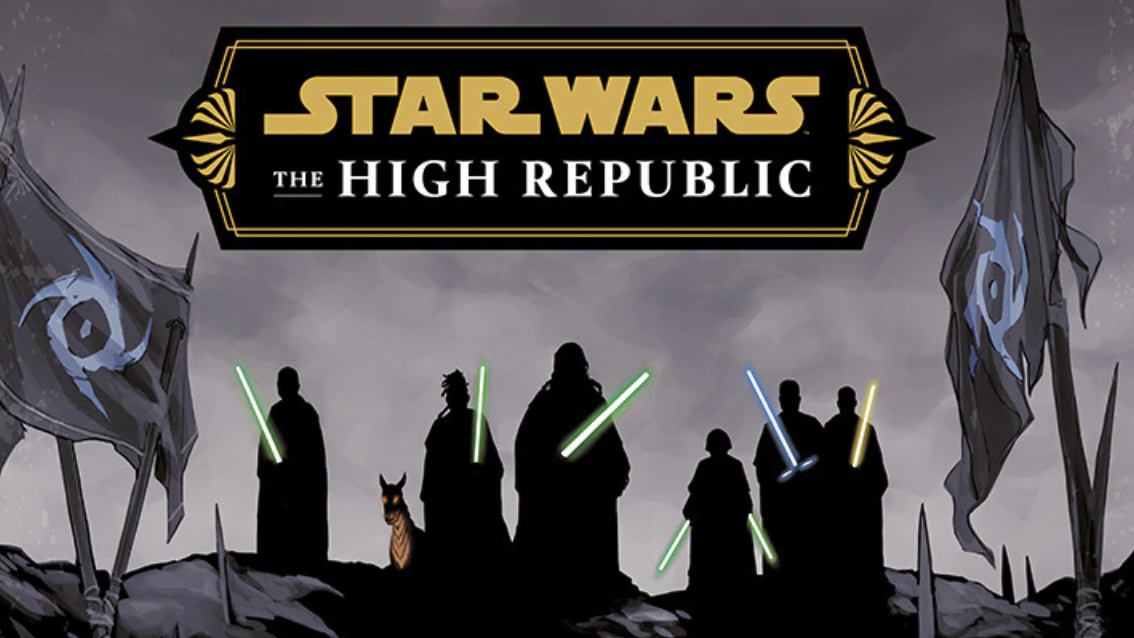
Q: You touched on it a little bit, but can you go into more explanation in terms of what inspirations that you had as you crafted the book?
A: One of the main inspirations was the previous three books in Phase 1 and the work that those three authors, Charles [Soule], Cavan [Scott], and Claudia [Gray], had all done to present these characters to that point. I joined the High Republic quite early on, in the background. I wrote a Drengir story for the Target special edition of Dark Legends. So, I was given access to a lot of the material at that point because Mike already had an idea that he was going to bring me in for Phase 2. Instead of just giving me just the Drengir stuff in isolation he said, here you go read the material, write the Drengir Story, the rest of it might come in useful at some point. I was getting to read, as a fan, the manuscripts of the novels as they were written, which was a brilliant experience. I was hugely excited about this new era and the new characters. Everything that the original five architects had done and, for me, that in itself was a huge inspiration for Eye of Darkness to go into it and go, “Okay, I’m now carrying a torch that these guys lit.” I want to do justice to that, but also it’s inspiring to make you want to do your best work as well.
I suppose the other thing is I read a lot of epic fantasy. There’s a particular series I love called the Malazan Book of the Fallen by Stephen Erickson. What he does in those books is he writes these whopping great, like thousand-page books, and there’s 10 of them in the series, but what he does is multiple viewpoint characters. He’s dipping into lots of different characters in different situations, and he’s a master at kind of pulling those threads together as the book moves on. I think there was a bit of inspiration there in the way I approach the writing of The Eye of Darkness, and I think we’ve got like nine viewpoint characters overall, probably seven major viewpoint characters. They’re scattered across the galaxy. You got people on Coruscant, you’ve got people in the Occlusion Zone, and in different camps and different situations.
Q: There’s a method to my madness for this next question because usually, I ask about upcoming projects much later on, but before we get into some more in-depth conversation on The Eye of Darkness, I wanted to ask you if you could potentially give me one word to describe your next High Republic venture, that young adult novel that you mentioned, Tears of the Nameless?
A: If I had to pick just one, it would be “fear.” Maybe not quite in the way that people will be expecting, but there’s a definite theme there.
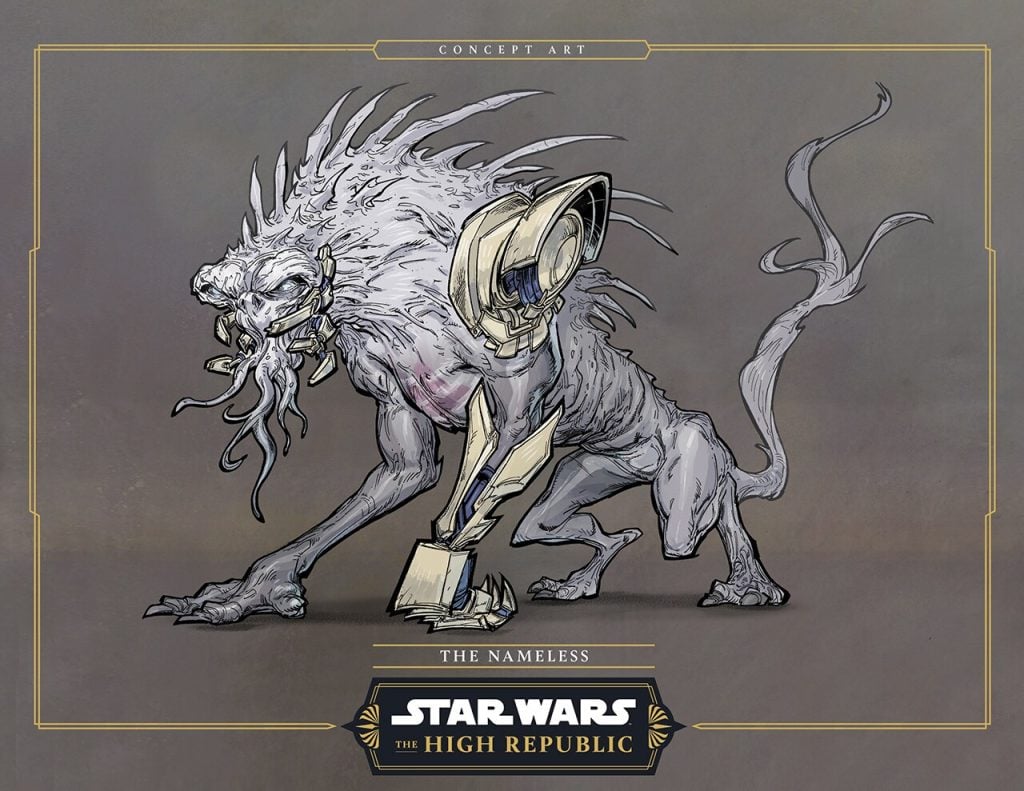
Q: The reason why I say there’s a method to my madness is because I love the way way you approach the Nameless. You mentioned your work in Phase 2, and for me, one of the more underrated entries in the entire High Republic is your Nameless Terror miniseries. I loved your approach and this Aliens meets Jaws type of vibe. I just wanted to ask how you went about translating your approach from The Nameless Terror and other places into The Eye of Darkness.
A: I think with The Nameless Terror, I definitely wanted to do exactly what you said, it’s Aliens. Jaws. It’s a disaster movie based on the siege story. They’re trapped on this wrecked spaceship, and the Nameless are there, but actually, you don’t see that much of the Nameless in the comic. You do see them, but we’re playing in a visual medium, of course, with a comic. I always think things are more scary when you don’t see them that much. I think that’s true of the original Alien movie. The alien is at its absolute scariest when you’re just getting glimpses, moments where you catch a glimpse of something running down the corridor or a little bit of its mouth. When you actually see it, it becomes a monster movie rather than like the tension, you know, it breaks the tension a little bit. I think it’s important to treat the Nameless a little bit like that at this stage.
I wanted to treat the Nameless a bit in the same way as Marchion Ro. I want you to feel his presence in the book, and throughout everything, he’s the architect of of everything that’s happening in The Eye of Darkness. He doesn’t have a huge amount of screen time, and you hardly see inside his head, and there’s a reason for that because it makes him all the more scary. We’ll come back to that when we talk about him, but I think that’s true of the Nameless as well. You don’t want to show too much leg essentially. I think there’s also a different element to consider, which is I’m telling part of the story in this book. Obviously, we’re setting up the general trajectory of the phase here. We have lots of different story strands with the comics, with the YA books, with the middle-grade books that we’ll explore and focus on, like we did in Phase 1 and 2, different story threads and story elements. So you’ve got to leave room, not do everything in one book. Got to leave room for other people to come in and play as well.
Q: Let’s get into some Marchion Ro. I described him in my review as the ultimate boogeyman for the High Republic and the entire galaxy at this point, that there’s always a fear of what he could do next. But it’s funny because whenever we spend time with him in The Eye of Darkness, he’s not really that. You bring out a new side of him that was very interesting to see you tackle, so why was his own conflict over the things he did in Phase 1 important to showcase?
A: I think Marchion is one of the most fascinating villains we’ve seen in Star Wars. Obviously, you have Anakin-Darth Vader as the core archetype of the classic Star Wars villain, and he’s all about the dark side and power. And then you have people like Thrawn, who is all about control, strict order, and tactics. What I think Marchion Ro is all about is chaos. He is an agent of chaos, and what I really wanted to explore in this book [is] fundamentally, it’s a book about the Jedi and the Republic having lost. We’ve seen Marchion’s campaign in the first three books of Phase 1 to bring the Jedi and the Republic to their knees, and he does it. It ends with him bringing Starlight Beacon down into Eiram’s ocean. What we’re exploring is the state of the galaxy where the Jedi have lost, so we’re diving into their mindset a lot. But I think it was really important to show where Marchion is at because you know that he’s lost as well. He’s lost by winning.
One of the rare moments where, in the book, he does let his guard down [is] when he’s talking to Ghirra about how he’s feeling about things. He says to win, I had to become my enemy, and by becoming my enemy, I’ve lost. Because you know his whole shtick is chaos of chaos’s sake; he thrives on the chaos. He doesn’t want to be a governor, he doesn’t want to rule a sector of space. By bringing up the Occlusion Zone, not only has he shut out the Republic, he’s also created a prison for himself as well. You’ve got Ghirra in his camp. His lover is telling him, no, we have to reorganize; we have to become Ministries rather than Tempests. We have to, you know, rule. We have to look after these people that we’ve trapped in this Occlusion Zone. This is everything you wanted. Marchion’s point is it’s everything I don’t want. In fact, it’s the opposite. I thought that was a really interesting exploration of a villain to say, what happens after you’ve won? What happens after you’ve got everything you want and it’s not satisfying?
In some ways, that makes Marchion even more scary because what’s he going to do now? What’s next? We get a little glimpse of that, and this is a spoiler for people, but a little glimpse of that when he executes Pra-Tre Veter [and] broadcasts it to the galaxy. He’s completely undermining everything that Ghirra is trying to do there, and he’s not doing that because he wants to undermine Ghirra. He’s doing that because he wants chaos and doesn’t know how to do anything else. He has to keep poking the wound that he’s created for the Jedi, but in doing so, he’s also poking that wound for himself as well, and that, for me, was the key to unlocking this story as a writer. Realizing that everyone’s lost here. It’s not just the Jedi who are feeling that despondency and don’t know what to do next. Marchion’s the same. Him and Elzar are very much a mirror throughout the the story.
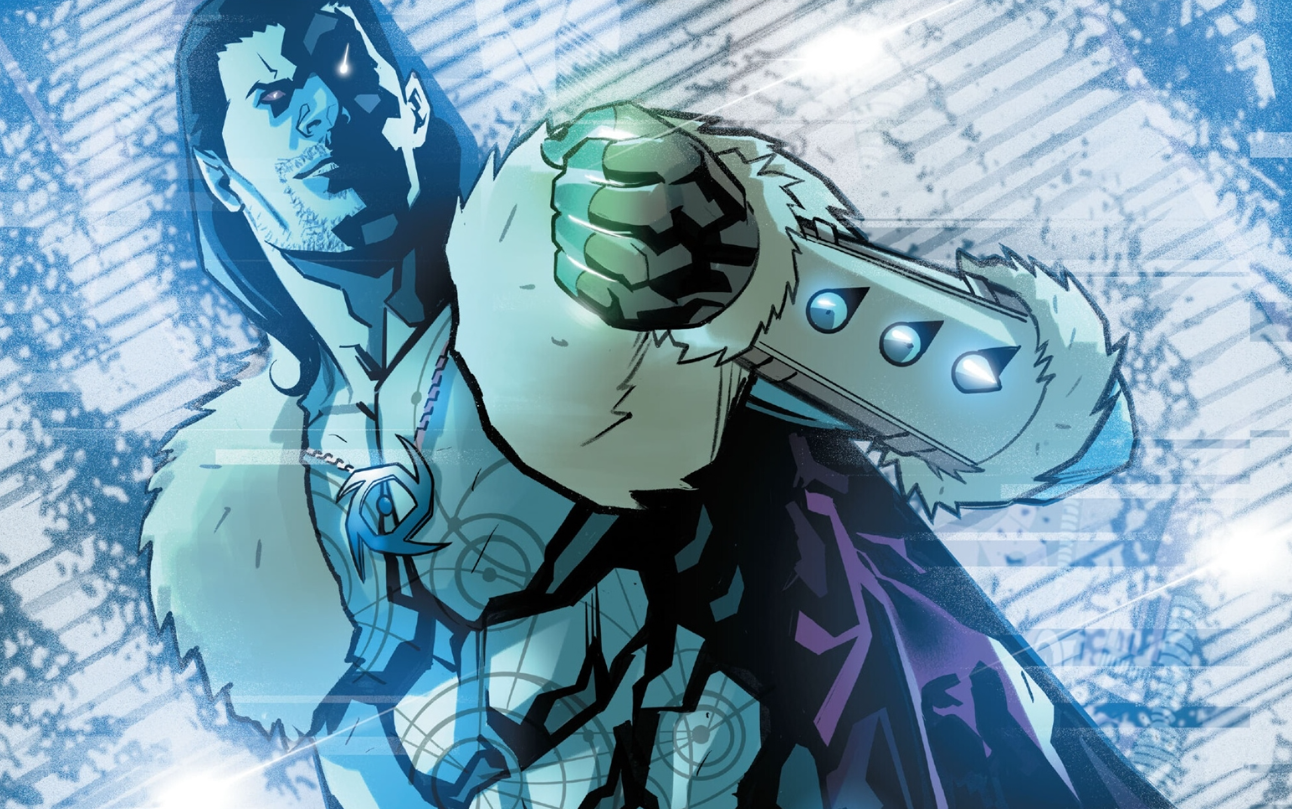
Q: Elzar [Mann]. He’s had a rough time of things, to say the least, and he’s being pulled every which way emotionally. This is a two-prong question. Part one, online I see a lot of comparisons to Elzar to Anakin Skywalker. Do you subscribe to that at all, or do you think of Elzar as some other mythic figure?
A: I think he’s a character in his own right, to be honest. I can see there are parallels, and I can understand why people make those connections, but I actually think he’s quite different in a lot of ways as well. He’s dealing with different problems. A lot of his issues are internalized. He’s made mistakes, and he doesn’t have someone whispering in his ear like Anakin. Anakin’s downfall for me is, he’s very much manipulated by Palpatine, who toys with his emotions and pulls them in that particular direction. That’s not to say it’s Palpatine’s fault and not Anakin’s fault. Anakin’s fall is very much his own fault as well, but I think Elzar is in a different place entirely. What I wanted people to feel when they read him in this book was that he’s human, and you know, the Jedi, they’re not superheroes. They can do incredible things, and they’re particularly strong when they have each other. The true strength of the Jedi Order is the fact that there is a Jedi Order. They’re not individuals, and I think where we join them in this book, and particularly Elzar in this book, is that they’re operating more as individuals because they all have different ideas.
They’re at sea, they don’t know what to do. Yoda wants to focus on the Nameless. The Council recalled everyone to Coruscant and put the Guardian Protocols in place. Elzar wants to go and bang his fists against the Occlusion Zone until he can break through. Everyone’s pulling in slightly different directions, and Elzar is struggling. He blames himself for the fall of Starlight Beacon, for what happened with Chancey Yarrow, and he blames himself for Stellan’s death as a result of that. He thinks he’s the one who’s driven Avar away, which couldn’t be further from the truth, but he doesn’t know that. He’s trying to fill the hole. He’s promised the universe he’s going to make up for Stellan’s death by being as good as Stellan was. He’s also trying to fill in for Avar and be a politician, diplomat, and bridge between the Republic and the Jedi Council, and it’s breaking him.
He’s internalizing it all, and it’s not that he’s falling to the dark side or anything like that. I think it’s more that he’s struggling with the same things that a lot of people would struggle with in those circumstances. These people have been through a heck of a lot. They’ve lost friends and loved ones. They’re carrying a very heavy burden, and they don’t know what to do. I think he is an exemplifier of that for me. The lesson he needs to learn, and it remains to be seen whether he learns it or not, the lesson he needs to learn is that actually being Elzar is enough. He doesn’t have to try and be Stellan, he doesn’t have to try and be Avar. He has to forgive himself for making mistakes because everyone makes mistakes, and he needs to just be Elzar because Elzar is what they need from him, what the galaxy needs from him. I hope he makes that realization. That’s what I was setting up here for him.
Q: You just answered kind of the second part of that question, in that for Elzar, it’s not a matter of will he fall the dark side. It’s what does he have to do to center himself and get back on the right path?
A: The answer to that question is what I alluded to before, which is the journey that Avar is on in this book. It’s stop trying to be an island and remember that it’s okay to need people because you’re stronger together. For me, that’s what makes the Jedi the force of good in the galaxy, that they are, and that’s what I want them to remember. That’s not where they’re at the moment.
Avar kind of exemplifies that because that’s the journey she’s on. She’s in the Occlusion Zone, and she’s being very much kind of like, “I’m not the hero of Hetzal. I can’t live up to that. I’m not the marshal of Starlight Beacon. I can’t live up to that. I’m just going to be a Jedi and do good things every day.” That’s not enough. Those little things she’s doing aren’t adding up to the big win that she wants, and it’s not until she realizes from Belin the Ugnaught prompting her, and from hearing that message from Elzar that she realizes, “I need to step up and be the person I’m supposed to be and be with the people I’m supposed to be with.” That’s really fundamental. I need to go home and be with everyone, and I think Elzar, that’s what he needs to learn from Avar.
Q: You introduced a lot of new things because you kind of had to. This was the first book of Phase 3, so you’re pulling in a lot of these grand ideas from the High Republic team. Some of those things are characters like Baron Boolan, Yoda, and what’s going on with him and Azlin Rell that you couldn’t necessarily wrap up, but you had to introduce and set up. Can you describe the process of having to balance trying to tell the best version of your story versus playing within the boundaries of this larger High Republic initiative?
A: It’s challenging because you know you have ideas that you think, “Oh okay, I could run with this, I could run with that.” I could do this with this character and that with that character, but then it wouldn’t be the book it needs to be. This is one chapter in a big story, and it’s an important chapter. It’s launching a new phase; it’s setting up a new status quo in the galaxy, but I have to share the love with the rest of the team. I can’t pull all those threads into this book because it’ll be too much anyway. The book would lose focus.
Every choice is purposeful. If you’re seeing a character like Azlin make an appearance in the book, there’s a reason for that. There’s a reason he’s being introduced at that point, and we’re having that sideways look at him. As we know from Charles’s Shadow of Starlight comic, Azlin’s back, and you can infer from that there might be future exploration of that character, but you got to remember your role as a storyteller within a team. That’s always important because I write original novels of my own, and you can do what you want with your characters at that point, but I think the book would actually be lesser for trying to do all of that stuff. Everything we talked about, the themes, about exploring the two sides of the Occlusion Zone, and the fact that everyone’s lost, that Marchion Ro’s lost, and that the Jedi and the Republic are lost. I think you start to dilute that theme by exploring different elements. If we have characters going off on an adventure facing the Nameless, or start delving into what Baron Boolan’s doing, or you start worrying about what Azlin is doing back at Coruscant, you start to move away from those themes.
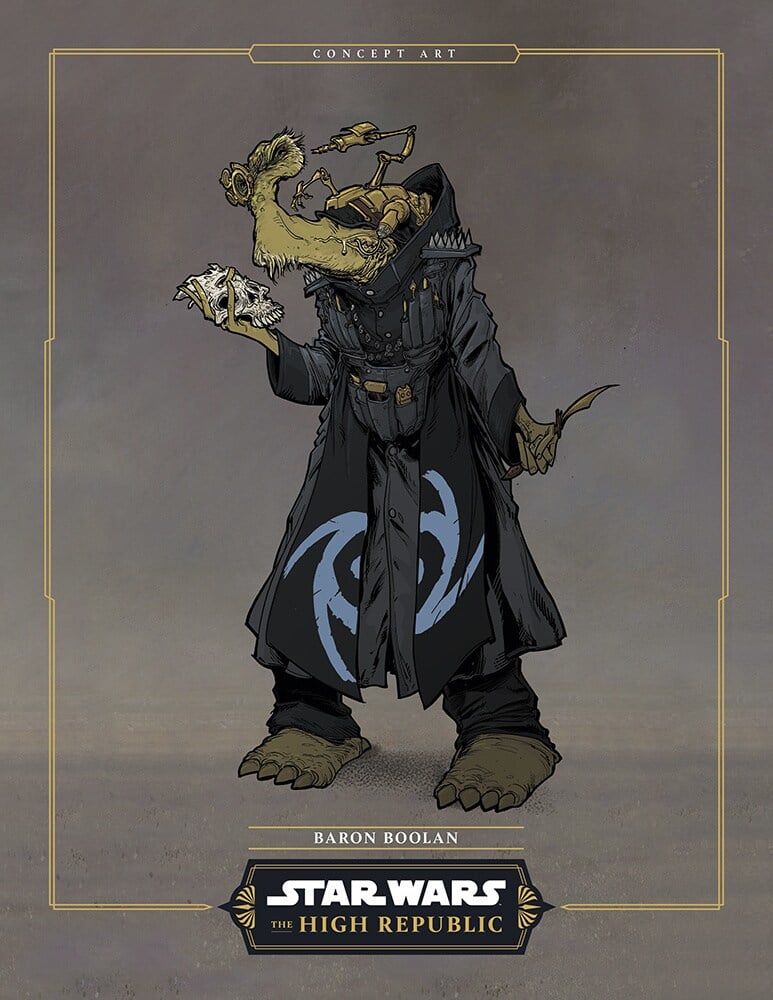
Q: Shifting to the book’s final pages, that idea couldn’t be more exemplified in how you chose to wrap up this version of the story with Elzar and Avar. Given everything that happened and after everything that’s happened in The Eye of Darkness, what’s the significance in ending things with that tiny little bit of hope?
A: I think it’s fundamental. That’s the win. Star Wars is always about hope. We mentioned that earlier when we were talking about theme, that’s a theme that runs throughout all Star Wars, about hope from the very early days of the Rebel Alliance. The Jedi, they’re not in a great place. The Republic aren’t in a great place at this point. They’ve had a whole year, and they’ve not made any real progress until Avar realizes that she needs to be back on Coruscant and she needs to be back with the others. And she makes it. That moment, it’s the rekindling of hope for everyone. It’s personal for Avar. It’s very personal for Elzar as well, but it’s a beacon of hope being lit for the Republic and the Jedi. It’s the win that they needed at that time to actually know we can do this. Look! Someone’s come home, and they’re okay, and we can beat them because we’ve found a way.
There’s obviously lots of action sequences in the book. There’s big climactic battles, but it’s not like we’re going to overthrow the oppressors, take down the Stormwall, and beat Marchion Ro. It’s a much more personal ending, but for me, that thematically fitted with what I was doing in the book, being very much a character study of those core characters. This is the win that is going to have the most emotional payoff as opposed to just spectacle.
For more, including Mann’s answer about which other Star Wars characters he would like to visit in the future, High Republic and beyond, check out my entire conversation with Mann about The Eye of Darkness on our YouTube channel. Be sure to subscribe to get notified for future content.
You can follow Mann on Instagram and Twitter/X. His next Star Wars project will be Tears of the Nameless, a young adult novel following Jedi Knight Reath Silas and Padawan Amadeo Azzazzo as they investigate the Nameless. It is currently slated for release on September 3, and you can pre-order it here.
Nate uses his love for Star Wars and movies in general as a way to cope with the pain of being a Minnesota sports fan. When he's not at the theater, you can usually find Nate reading a comic, listening to an audiobook, or playing a Mario video game for the 1,000th time.

